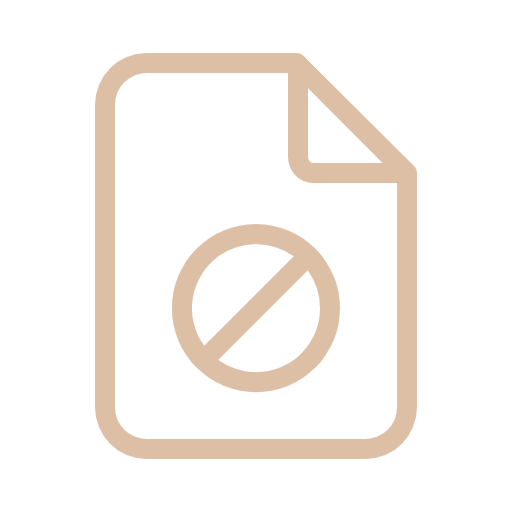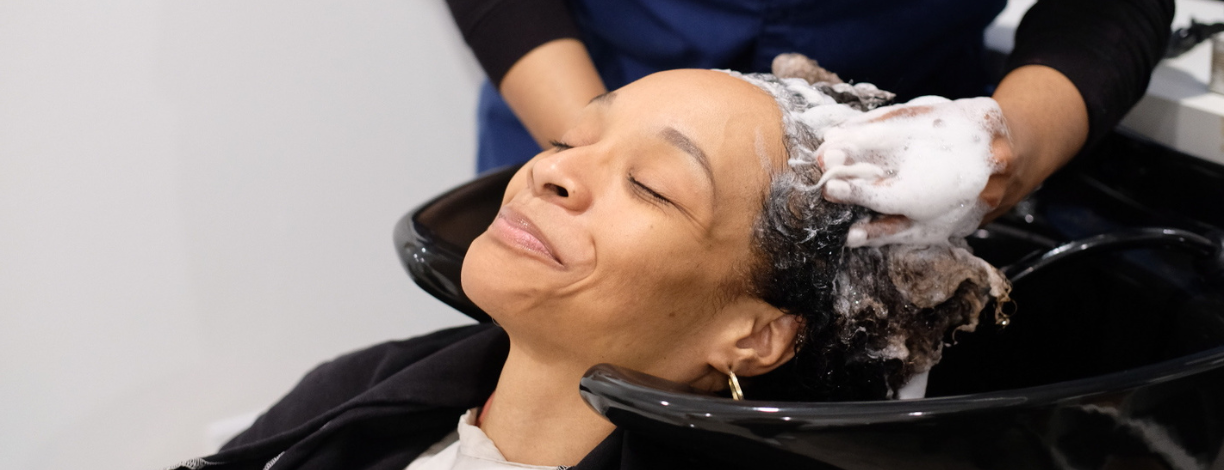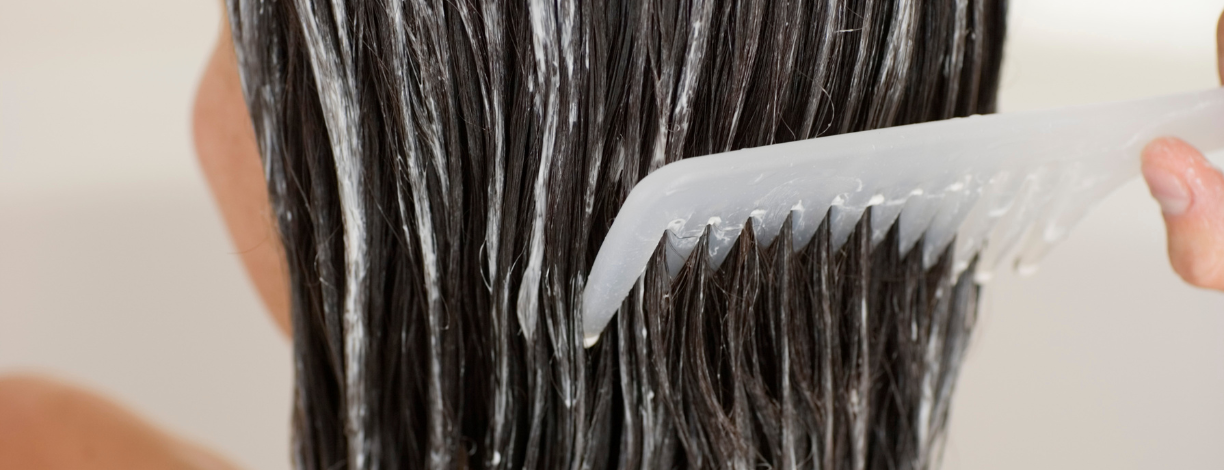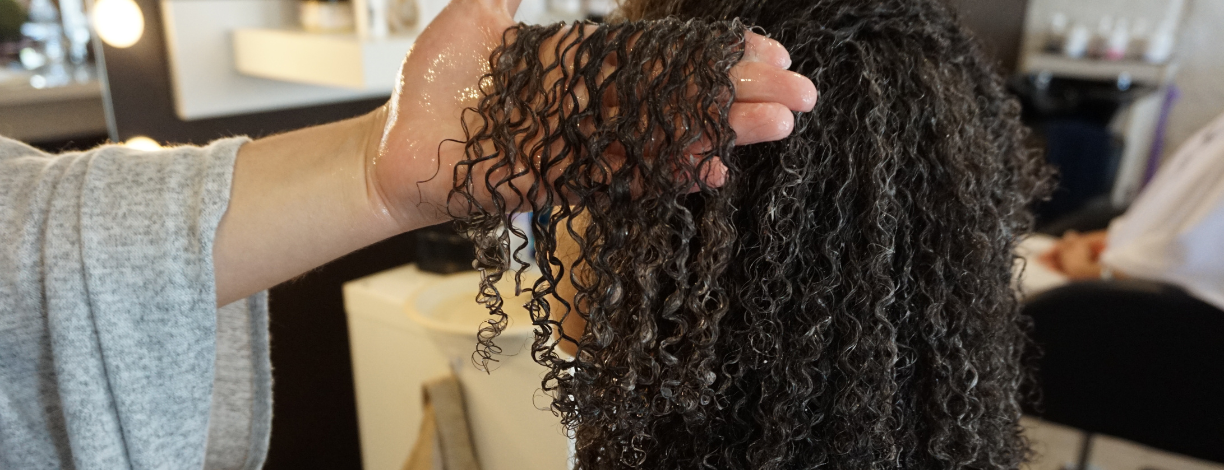Our Blog
Choosing the Best Moxie Shampoo for Your Hair
At the heart of our shampoo formulations is an understanding of shampoo’s role in nurturing your hair. Regular, proper cleansing with a sulfate-free shampoo allows moisture to penetrate the hair, which is essential for proper hydration and hair health! Original Moxie shampoos are sulfate-free & extremely gentle. They tone the hair & scalp, promote a healthy pH, and maintain the integrity of the scalp’s outer mantle. We offer 2 shampoo options – a no-foam shampoo and a clarifying shampoo. Not sure which one would suit your hair the best? Join us as we dive into the unique features of each shampoo so you can find your perfect match! Get Clean No-Foam Shampoo Get Clean is our top pick for normal to dry hair. Its sulfate-free formula removes dirt and excess oil without disturbing your scalp’s natural balance! It’s especially beneficial for curly hair that struggles with moisture retention or for anyone with scalp issues such as dandruff or itchiness. The star ingredient in Get Clean, Organic Turmeric, has the unique ability to calm inflammation, combat bacteria, and regulate sebum production in the scalp! The active component of the root, Curcumin, possesses anti-fungal, anti-inflammatory, antioxidant, antiseptic, and antibacterial properties, and works effectively to correct scalp conditions like dandruff. Karanja Oil, pressed from the seeds of the Pongam Tree, also contributes anti-bacterial benefits and provides effective relief from skin conditions such as dandruff while toning and cleansing the scalp. Additionally, Get Clean’s cream-based formula offers excellent slip, making detangling a breeze. You can effortlessly soften and loosen tangles with your fingers during shampooing, simplifying your styling routine afterward. Original Moxie Founder, Rachel Blistein, attributes the remission of her lifelong Seborrheic Dermatitis to the benefits of this product. Triple Threat Detox Shampoo Build-up happens no matter how perfect you are at caring for your hair! Gradual build-up often occurs because small amounts of minerals are present in most municipal water systems. Additionally, pollutants in the air, like dust, dirt, and chemicals, can also accumulate on our skin and hair, leading to build-up over time. Minerals can block water from entering your hair, affecting how your hair feels and how your styling products perform. To combat build-up, we recommend Triple Threat Detox Shampoo. Its powerful formula cleanses, clarifies, and chelates – a process that removes minerals and heavy metals from your hair and rinses them down the drain where they belong! Like all of our products, Triple Threat is ultra-concentrated, meaning a little goes a long way. It’s curl and color-friendly, meaning it’s safe to use on any hair type. Its foamy lather is gentle, and its minty, fresh scent leaves your scalp feeling invigorated. If you have city water, your mineral build-up is likely gradual. You can use a chelating shampoo every 3rd wash. If you have hard water, or low porosity hair that is especially prone to build-up, you can technically use a chelating shampoo every time you wash. If you have dry and/or high-porosity hair, we recommend using Get Clean as your regular shampoo and using Triple Threat every 3rd wash. If you have oily hair, you can use Triple Threat as your regular shampoo. If you’re unsure which Moxie products are right for you, take our Hair Type Quiz for personalized product recommendations.
Damage-Free Detangling
(Spoiler Alert: It’s a Mindset, not a Method) Whether your hair is curly or straight, tangles are just a part of life. Removing them can sometimes feel like a scene from Mission Impossible! We’re here to tell you that if you do it right, it shouldn’t feel that intense, difficult, or, well, impossible. If all of your detangling efforts happen on wash day, you’re doing it wrong. Here’s how to cultivate a tangle-minimization mindset so that you can spend your wash day pampering and not torturing your hair. PART I – PREVENTION Get Regular Trims This won’t make your hair grow faster, but it will help minimize tangles by reducing split ends and ‘orphan’ hairs that are shorter than surrounding hair strands. These areas of breakage cause friction that breed ‘fairy knots’ – extremely tiny tangles that are very difficult to remove without cutting. Call the Original Moxie Salon at 734-340-4022 to book your next trim. Detox, Detox, Detox Mineral build-up on the hair is one of the main culprits when it comes to tangling. Hard water and chlorine deposit microscopic particles onto the hair that dry and roughen the hair. Again, anything that increases friction on the surface of the hair will lead to tangling. To combat hard water, you must use a chelating shampoo or treatment that contains specific ingredients that bind with and remove minerals from the hair. If your exposure is frequent, we recommend a chelating shampoo such as Triple Threat combined with Professional Moisture Detox Treatments. If it’s gradual and/or seasonal, you can get by with seasonal Moisture Detoxes. Use our store finder to find a Moisture Detox provider near you! Wear That Bonnet! When we lay our heads down to sleep, and then roll around, sweat, drool, etc, it’s like Tangle-palooza for your hair strands. To prevent tangles at night, we strongly recommend that you wear a satin bonnet or, at the very least, use a satin pillowcase. Beware The Necklace! Sad, but true. That cute chain on your neck can be death to the delicate hairs at your nape. The tiny mechanics of a metal clasp are just right for snatching and slashing any hairs that are unfortunate enough to come their way. What can you do? Try this clever hack from Cosmopolitan that uses an aquarium tube to protect your hair from snags. Beware The Rubberband! Rubberbands (yes, even the kind that says non-snag) will cause breakage and breakage causes what? That’s right. Tangles. Instead, use a satin scrunchie or puff cuff to put your hair up PART II – REMOVAL All of these steps will reduce, but not totally eliminate tangles, and that’s half the battle. But despite your best efforts, tangles will show themselves, particularly in tightly coiled hair. The coiled structure of the hair means that shed hairs almost knot themselves onto the remaining hairs of the same curl family. Here are some simple tips for damage-free detangling: To remove the ones that crop up, we recommend a gentle, progressive process that starts with your shampoo. Get Clean No-Foam Shampoo is cream-based and slippery, allowing you to soften and loosen tangles with your fingers before you even begin your styling routine. Next, SATURATE your hair with water and conditioner so that your hair literally squishes when you squeeze it (you can see and hear what that’s like in this video). Once your hair is thoroughly saturated with conditioner, continue the detangling process by pulling your fingers through your hair in small sections, working from roots to tips. Do not avoid the roots! We see waaaay too many heads that are detangled only from the first inch down. This can lead to severe matting at the scalp. These are incredibly time-consuming to remove and can lead to serious breakage and loss of length. Really get in there so that your fingers come into contact with your scalp on each pass. If you find that a detangling brush works better for you at this stage, by all means, go for it. Just remember to use one that does not snap or pull your hair. After rinsing out your conditioner, broadcast your moisturizer or all-in-one while still in the shower. For very thick and tightly-curled hair, you can loosely braid your hair in four to six large sections to keep tangles from reasserting themselves. Then pop a shower cap on your head to keep all the hydration in place. If the previous steps have taken care of all your tangles, congratulations! You are done and ready to move on with the rest of your styling. For those with more tangle-prone hair, you may need to finish up with a comb or brush. There are many great detangling brush and comb options out there and they work differently on different hair types. Experiment until you find one that works for you. No matter what tool you use, always start from the bottom and work your way up so that you do not further tighten existing knots. With a prevention mindset and a ‘progress’ approach, you can get your detangling done in under 15 minutes, making this one mission very much accomplished!
Ingredients Matter: Tips for Curl Defintion
Do you struggle to achieve curl definition? Do you find that, while some products make your hair softer, they don’t necessarily help your curl to ‘pop’? The good news is this: it’s not your hair and it’s easy to fix. Check out the label of some of the products in your bathroom and you’ll see that most leave-in conditioners list glycerin right up near the top of the list of ingredients. Why? Because glycerin (when mixed with water) is a powerful and inexpensive humectant (an ingredient that attracts moisture to the hair). Why would that be a bad thing, you ask? For some hair types, it’s a godsend because that intake of water into the hair swells the hair shaft and lifts the cuticle, thereby activating curl and making the hair appear fuller. However, for other types, this same action will make hair frizzy and work against, not with, your natural curl pattern by creating less affinity and more friction between the individual strands. So which hair types, you might ask, like glycerin and which do not? Unfortunately, because hair types are so complex, it’s hard to give a definitive answer. Some hair types will respond well to a simple water-based glycerin mixture, like Oasis Hydrating Primer, but not to a cream that contains both a high percentage of glycerin and oil (this describes the majority of curly hair products). Tight, low porosity curls generally fall into the former category, but definitely benefit from an oil-based oil or butter, like Shape Shifter, Everyday Leave-in, or Lux Locks, to further enhance definition, sheen, and moisture retention. High porosity, S-curls generally see more frizz and less definition with any humectant, including Oasis. Fine, wavy to curly hair, however, thrives on glycerin-based moisturizers. The bottom line? Read ingredients and, when in doubt, sample before you commit. Curls are not one-size-fits-all, so if a moisturizer for ‘your hair type’ doesn’t work for you, just leave it behind and move on! Need help finding the right moisturizer? Take our Hair Type Quiz to find your perfect product matches!

Sorry, We couldn't find any results.



